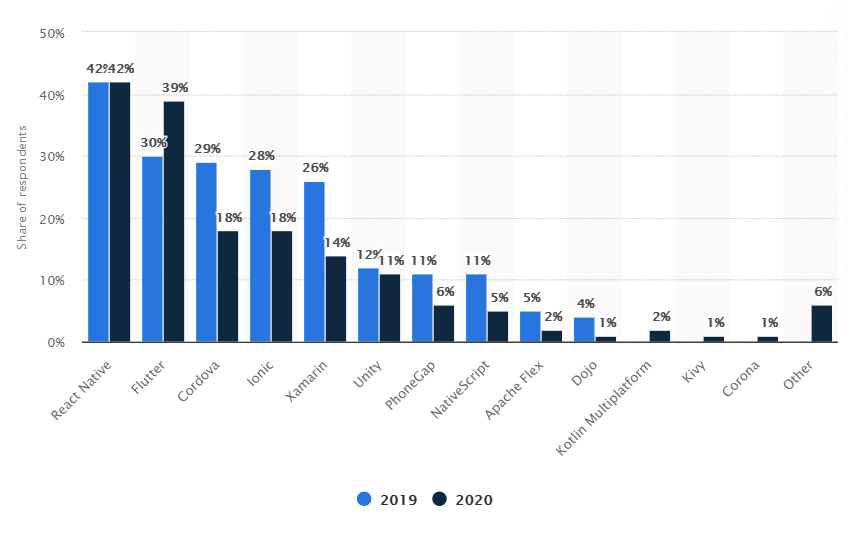React Native or Flutter, What to Choose in 2021?
Do you know which cross-platform is gaining popularity? And which framework best fits your requirements in 2021? This article might assist you to form smart & conscious decisions while choosing the best cross-platform solution for your app idea.
A cross-platform solution should be ready to provide the fastest time-to-market for the app, which may save both time & money. Since business owners are looking to invest wisely in 2021 as they had a tough game this year due to the global pandemic, it is very important to understand the platform and its benefits before investing in it.
Let’s first understand the benefits of cross-platform app development!
Cross-platform mobile applications are mobile apps developed to function for multiple mobile platforms. These apps are compatible with more than one operating system, like iOS and Android.
With cross-platform mobile app development, developers can build applications that will run on different platforms with one single code system. It means the companies can release the product faster and with better quality. Since it is compatible with various mobile operating systems, these apps can reach a broader audience.
Some of the popular cross-platform development tools are React Native, Xamarin, Flutter, Cordova & Ionic, etc.,
As per Statista - React Native is the most popular cross-platform which was used by global developers in 2020. According to the survey, 42 per cent of software developers used to React Native. But, Flutter has seen a 9% growth in usage from 2019 reaching 39% next to React Native.

However, StackOverflow Statistics shows the percentage of developers showing more interest (most loved platform) in Flutter compared to React Native. ( Flutter’s score is 68.8%, while React Native has 57.9%).
The Github statistics present the number of contributors to open-source projects. React Native has 9.1k contributors, while this number for Flutter reaches 13k. And on Google Trends as well, Flutter has more popularity than React Native.
At Mo Works, we may be biased, as we have used React Native with several projects like Zukaz, Airly, Sicky, and Eight. However, we have been considering using Flutter in our latest projects which pushed us to do some research and development trying the technology to build solutions that can power virtual meetings, augmented reality concepts, and live streaming. As a result, we have prepared this table that highlights the main differences between React Native and Flutter.




